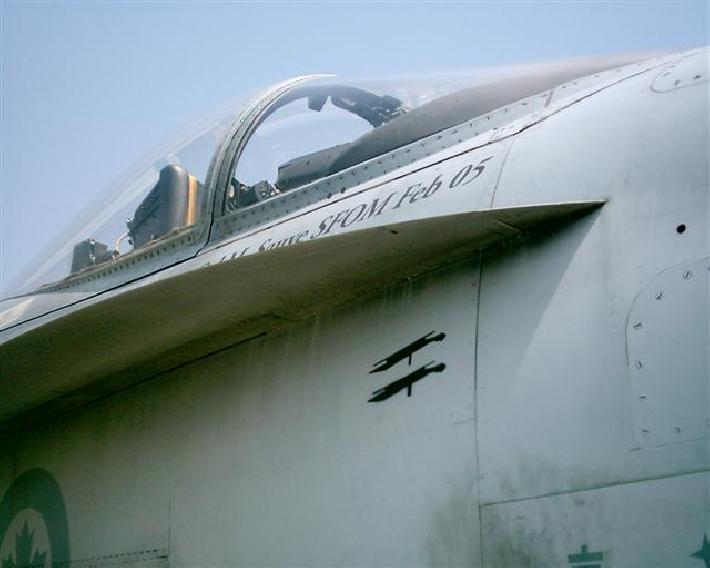Although we don’t know exactly the story behind this photo, a “broken probe” is not an uncommon incident.
The unusual photo in this post shows a Royal Canadian Air Force (RCAF) CF-18 Hornet featuring kill markings for broken refueling probes.
Although we don’t know exactly the story behind this photo, a “broken probe” is not an uncommon incident. A so-called “broken probe” (actually a broken fuel valve) may happen if the poor flying technique is used by the receiver pilot, or in turbulence. Sometimes the valve is retained in the tanker drogue and prevents further refueling from that drogue until removed during ground maintenance.
Noteworthy, the NATO standard probe system incorporates shear rivets that attach the refueling valve to the end of the probe. This is so that if a large side or vertical load develops while in contact with the drogue, the rivets shear and the fuel valve breaks off, rather than the probe or receiver aircraft suffering structural damage.
However in case of an air refueling mishap, the tanker can terminate fuel transfer, so the problem for the tanker aircraft can be manageable.
That may not be the case for the receiver airplane. If the refueling hose ruptures, or separates from the tanker’s refueling apparatus, due to the location of the refueling probe relative to the engine intakes, this can result in fuel ingestion into the engine, which causes engine fires, and eventual loss of the airplane. If the refueling drogue “basket” remains on the receiving airplane’s refueling probe this can prevent critical refueling to take place, introduce significant added drag to the airplane and shatter the receiver’s canopy. In some cases, this could become a major range problem.

Photo by Royal Canadian Air Force

